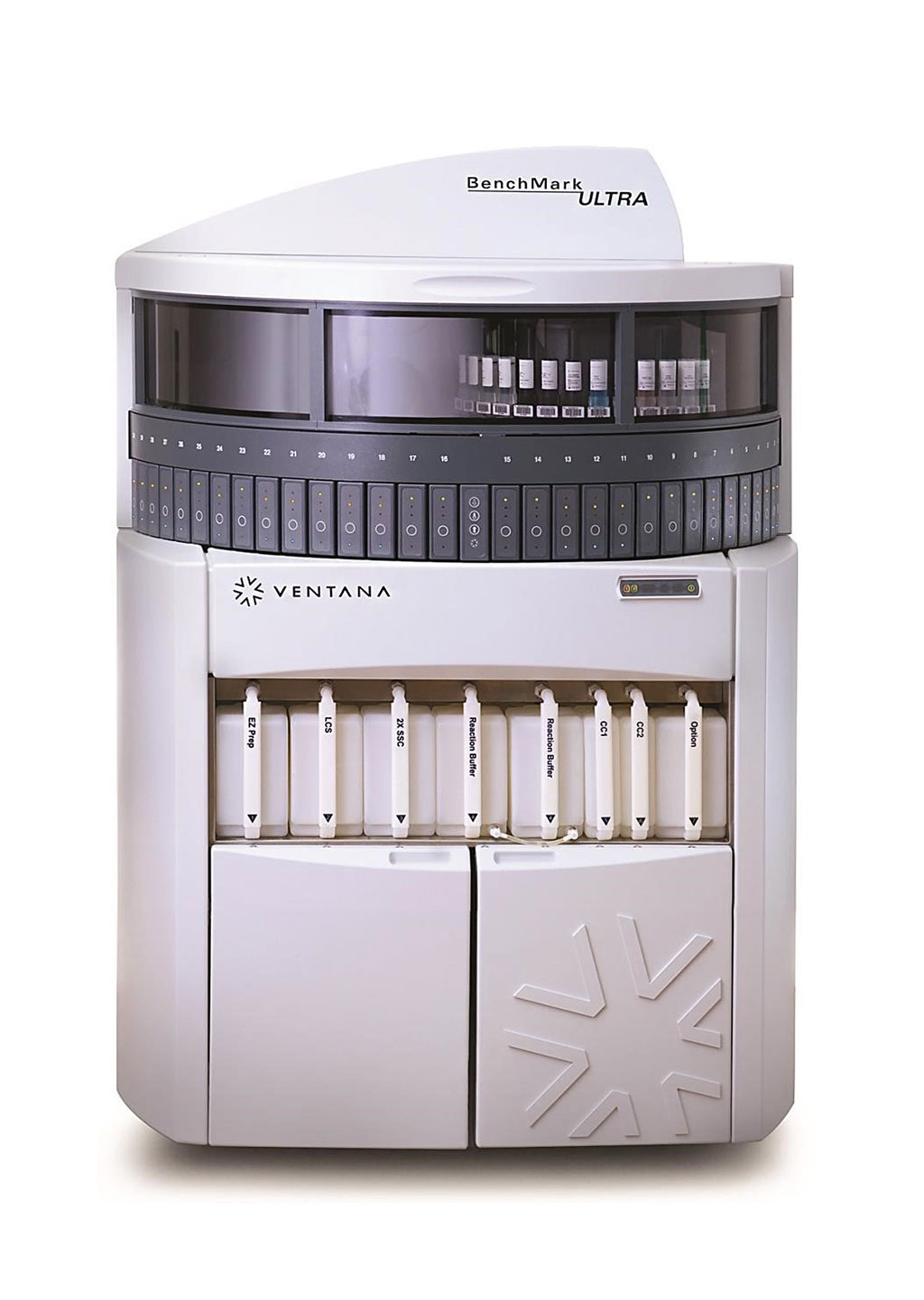Specific Biomarker Investigated for Triple-Negative Breast Cancer Diagnosis
By LabMedica International staff writers
Posted on 30 Nov 2021
Triple-negative breast cancer (TNBC) is defined by the lack of estrogen receptor (ER), progesterone receptor (PR), and human epidermal growth factor receptor 2 (HER2) expression and comprises a heterogeneous group of breast cancers that exhibit distinct morphologic features and biological behavior.Posted on 30 Nov 2021
Forkhead box transcription factor C1 (FOXC1) is a member of the forkhead box (FOX) transcription factor family, which plays an essential role in embryonic development and maintenance of adult stem and progenitor cell compartments. In breast cancer, high FOXC1 expression enhances the proliferation, migratory ability, and epithelial-mesenchymal transition of basal-like breast cancer (BLBC) cells.

Image: The Ventana BenchMark Ultra autostainer is for cancer diagnostics with automation and the test menu include IHC, ISH, and FITC tests (Photo courtesy of Ventana Medical System)
Pathologists at the Shanghai Medical College (Shanghai, China) enrolled in a study a cohort of 2,443 patients diagnosed with invasive breast cancer without distant metastasis between July 2019 and April 2020. Pathologic staging including tumor size (T) and lymph node (N) status was determined by surgical resection. Tumor histologic grading was performed according to the Nottingham grading system by assessing the following three morphologic features: tubule formation, nuclear pleomorphism, and mitotic counts. Hematoxylin-eosin–stained slides were reviewed.
All staining was performed with a Ventana BenchMark Ultra autostainer (Ventana Medical System Inc, Roche, Tucson, AZ. USA). Only nuclear staining was considered for positive AR, FOXC1, and GATA3 expression, whereas cytoplasmic staining characterized positive cytokeratin (CK) 5/6, CK14, and GCDFP-15 expression. Androgen receptor was assessed semiquantitatively with the Allred scoring method, which incorporates the intensity and distribution of reactivity. Immunohistochemistry staining with AR, GCDFP15, CK5/6, and CK14 was considered positive when more than 1% tumor cells were stained. FOXC1 was assessed semiquantitatively according to the distribution of reactivity.
The investigators reported that the expression rate of FOXC1 in TNBC was significantly higher than in other subtypes. The area under the ROC curve confirmed the high diagnostic value of FOXC1 for the prediction of the triple-negative phenotype. The cutoff value of 1% showed a maximized sum of sensitivity and specificity. In TNBC, FOXC1 expression was significantly associated with aggressive tumor phenotypes. Furthermore, FOXC1 expression was primarily observed in invasive breast carcinoma of no special type and metaplastic carcinoma, but rarely in invasive carcinoma with apocrine differentiation. Correspondingly, FOXC1 expression was significantly associated with the expression of basal markers but was negatively correlated with apocrine-related markers in TNBC.
The authors concluded that FOXC1 is a highly specific marker for the triple-negative phenotype. Moreover, immunohistochemical detection of FOXC1 expression can be used as an additional diagnostic tool for the triple-negative phenotype and subclassification in TNBC. The study was published on November 16, 2021 in the journal Archives of Pathology and Laboratory Medicine.
Related Links:
Shanghai Medical College
Ventana Medical System




 assay.jpg)



 (3) (1).png)





